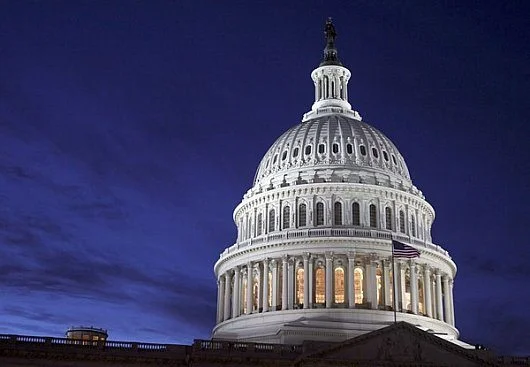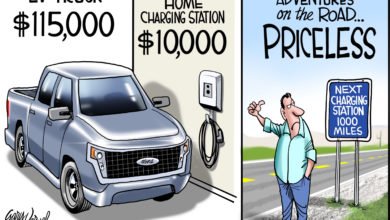Offshore Wind Is Solving All Its Problems With Taxpayer Subsidies

What level of government subsidization is enough for America’s rent-seeking wind industry? It is a question policymakers must consider now in light of new demands coming from the industry’s leaders.
Reuters reports that spokespeople for Equinor, Engie, and EDP Renewables are now pressing Biden administration officials to rewrite and loosen the rules around federal government subsidy programs to pour even more debt-funded money into America’s nascent offshore wind industry. This would be a natural move for Biden and his regulators to make, given the huge effort the government has made to promote this unneeded industry and speed its permitting along despite growing concerns over its impacts to marine mammals and the commercial fishing industry.
“The components needed for our projects to progress simply do not exist in the U.S. at this time, and we see no signs that the supply chain will be ready in time to meet our procurement schedule,” Reuters quotes David Marks, a spokesperson for Norway-based Equinor as saying. While that might sound like a management problem to most in the business world, executives in the wind industry seem to consider it just another reason to ask the government for more money.
On the same day, Bloomberg reported that Mads Nipper, CEO of Big Wind developer Orsted, is now threatening to “walk away” from its plans for U.S. offshore wind if the government doesn’t fork over more subsidies. “We are still upholding a real option to walk away,” Nipper said in an interview in London. “But right now, we are still working towards a final investment decision” on the company’s U.S. projects. Nipper’s remarks came after his company booked $8 billion in impairments related to its U.S. projects due to changing market conditions.
Market conditions change unexpectedly for every industry, and it is normally the job of company managers to perform contingency planning in anticipation of such events. For the wind industry, it is fair to conclude that such contingency planning amounts to demanding more government subsidies, the cost of which will inevitably be passed onto electricity rate payers at the end of the day.
Bloomberg writer Javier Blas emphasized that final point in a tweet following the interview with Nipper:
“We hosted Orsted CEO Mads Nipper today,” Blas writes in the tweet. “You can read my colleagues’ take below. But I will highlight two comments:
‘[Power] prices have to go up […] that is completely inevitable’
How much? ‘I won’t be specific, but it’s significant double digit’”
That “significant double digit” price increase demanded by Nipper will inevitably be passed onto consumers, though we can be sure that state regulators will find clever ways to hide the pass-through on complicated utility bills. That’s how this particular scheme always works.
Other wind developers are also making moves to scrap their initial U.S. offshore plans in the midst of these changing market conditions, demanding more government subsidies in the process. NBC Boston reports that two offshore developers whose projects would be designed to deliver power into Massachusetts paid stiff penalties to state regulators recently to cancel initial supply agreements.
The companies, Southcoast Wind and Commonwealth Wind, seek to cancel the contracts so they can renegotiate deals at higher rates they can charge to the state’s public utility companies. Those utility companies have little choice in the matter, since they must operate under renewable energy targets enacted by state officials that require inputs of specific amounts of offshore wind capacity. So, consumers can be sure the utilities will agree to pay the higher rates by the wind companies rather than face stiff penalties from the state government.
Massachusetts law requires state utilities to secure 5600 MW of wind capacity by 2027 to meet its target. The cancellation of these agreements will leave an inventory of just 800 MW secured thus far. What it all amounts to is a statutory subsidy from the state for offshore wind developers. When the wind developers declare the initial level of subsidy is not adequate to meet changing market conditions, they don’t hire better managers capable of proper contingency planning, they simply cancel agreed-to contracts and demand higher subsidies.
It’s a terrific business model if you can get it, and Big Wind companies obviously have no reason to believe they can’t.
David Blackmon is an energy writer and consultant based in Texas. He spent 40 years in the oil and gas business, where he specialized in public policy and communications.
The views and opinions expressed in this commentary are those of the author and do not reflect the official position of the Daily Caller News Foundation.
Content created by The Daily Caller News Foundation is available without charge to any eligible news publisher that can provide a large audience. For licensing opportunities of our original content, please contact licensing@dailycallernewsfoundation.org
Agree/Disagree with the author(s)? Let them know in the comments below and be heard by 10’s of thousands of CDN readers each day!




